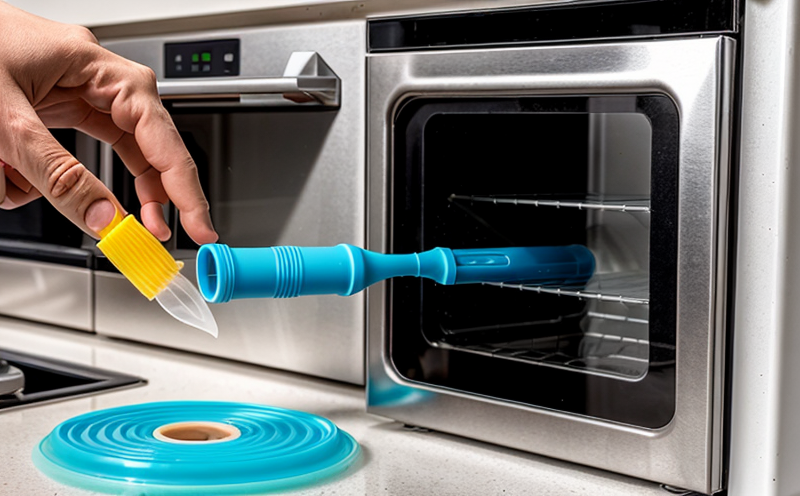ASTM D570 Moisture Absorption Testing of Household Plastics
The ASTM D570 standard test method is a critical tool in determining the moisture absorption properties of household plastics. This test measures the amount of water that plastic specimens can absorb under specific conditions, which is essential for ensuring product durability and performance.
Moisture absorption plays a significant role in the life cycle of household plastics. It affects how these materials interact with their environment, influencing factors such as flexibility, strength, and overall product longevity. Understanding moisture absorption helps manufacturers tailor products to meet specific environmental conditions while maintaining safety standards.
The ASTM D570 test involves exposing plastic specimens to controlled humidity levels for a specified duration before measuring the mass gain of each sample. This process allows for consistent evaluation across different materials, providing reliable data that can be used in quality control and product development processes.
For household plastics, accurate moisture absorption testing ensures that products remain safe and functional under typical usage conditions. For instance, understanding how much water a plastic container or toy can absorb helps prevent potential health hazards or structural failures over time.
The results from ASTM D570 tests are often used as part of broader quality assurance programs aimed at maintaining high standards within the manufacturing industry. By incorporating these metrics into design specifications and production protocols, companies can enhance their offerings by creating more resilient products that better withstand various environmental factors.
It's important to note that while ASTM D570 provides a standardized approach for assessing moisture absorption properties in household plastics, it’s essential to consider additional factors such as chemical compatibility with other materials used during manufacturing processes. Additionally, regulatory requirements may vary depending on geographical location; therefore, ensuring compliance with local standards is crucial when conducting this type of testing.
| Parameter | Description |
|---|---|
| Test Specimens | Uniformly shaped and sized samples representative of the material being tested. |
| Humidity Chamber Conditions | A controlled environment with precise humidity levels maintained for a set period. |
| Weighing Procedure | The mass of the specimen before and after exposure to moisture is measured accurately. |
Quality and Reliability Assurance
Implementing ASTM D570 moisture absorption testing as part of a comprehensive quality assurance program helps ensure that household plastics meet strict safety and performance criteria. This includes verifying that the products are safe for consumer use, do not pose any risks due to excessive moisture absorption, and maintain structural integrity over time.
By integrating ASTM D570 into product development cycles early on, manufacturers can identify potential issues related to moisture absorption before large-scale production begins. This proactive approach not only enhances the reliability of end products but also reduces costs associated with recalls or rework later in the process.
The use of this standard contributes significantly towards meeting international regulatory requirements set forth by organizations like the FDA (Food and Drug Administration) and EU directives on plastic safety. Compliance with these regulations ensures that consumers trust the quality of goods they purchase, thereby building brand loyalty among customers.
International Acceptance and Recognition
The ASTM D570 moisture absorption test is widely recognized globally for its ability to provide consistent results across various types of household plastics. Its acceptance by major regulatory bodies such as the FDA, EU authorities, and other national standards organizations underscores its relevance in ensuring product safety and performance.
Many countries have adopted ASTM D570 either directly or through locally modified versions tailored specifically for local conditions. This widespread adoption demonstrates the value that this standard brings to industries worldwide. By aligning with internationally recognized practices, manufacturers can ensure their products meet global standards without needing extensive adaptation efforts.





